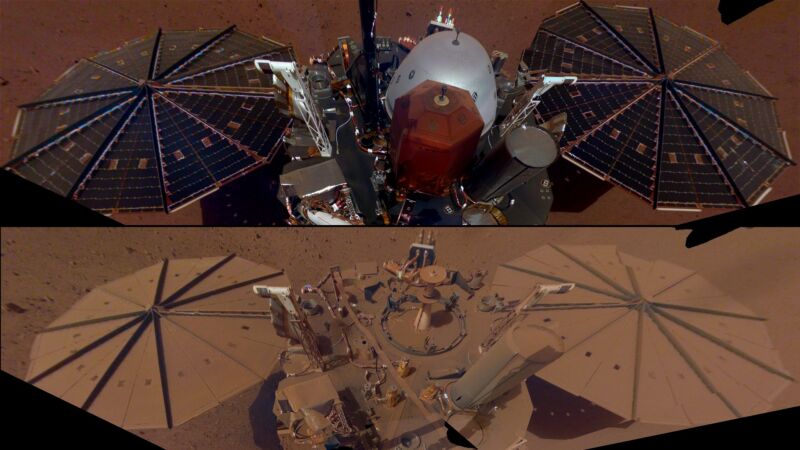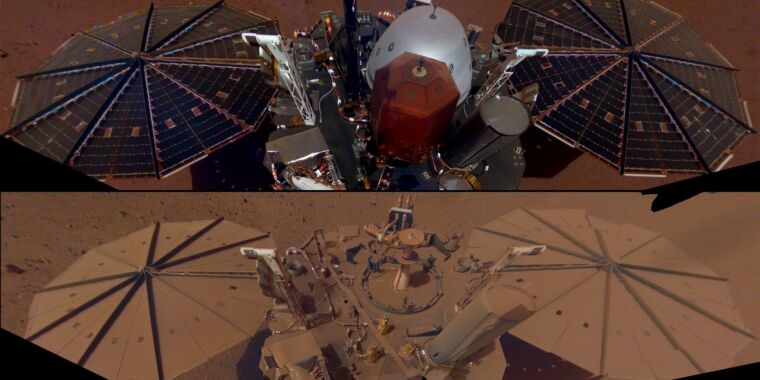
Paul Byrne/Twitter/NASA
Anyone planning to move to Mars should probably consider dust. loads of of dust.
Earlier this month, NASA announced it would soon have to suspend science operations on its Mars InSight lander due to the dwindling power of the vehicle’s dust-covered solar panels. The spacecraft, which landed on the red planet in November 2018 to study seismicity, simply cannot produce enough power to operate normally.
InSight has detected more than 1,300 Marsquakes, NASA scientists say, including a relatively powerful magnitude 5 quake on May 4. This was the largest Marsquake yet detected, and at the upper limit of what scientists hoped to detect. This seismicity has enabled scientists to uncover details about the red planet’s inner structure.
But scientists say they expect InSight to be completely useless by December this year, so they plan to complete the vehicle’s science operations this summer. This is because InSight’s solar panels, which produced 5,000 watt-hours of power every day after landing, can now only generate about 500 watt-hours. And the amount of daily power continues to decline due to dust buildup on its solar panels over the past three and a half years.
For some NASA missions to Mars, passing whirlwinds have helped clear dust from a spacecraft’s solar panels, as happened with the Spirit and Opportunity rovers. But unfortunately that did not happen for the seismic lander.
The first step to disabling InSight is to place the spacecraft’s robotic arm in a stowed position. This arm was initially used to deploy InSight’s seismometer and later for various tasks, including removing dust from InSight’s solar panels. But now there just isn’t enough power to move it regularly, and scientists want to conserve what’s left to keep the seismometer working for a while.
Before being put away, however, the robotic arm took one last selfie of InSight, and the dramatic result shows just how dusty the spacecraft has become. The whole of InSight is now shrouded in cold, dry, reddish dust.
The death of spacecraft on distant worlds always feels melancholy. Humanity sends these metal machines into hostile environments, where they struggle for survival and provide us with new knowledge about the unknown. Eventually they succumb to the cold or the radiation or the dust and we can no longer communicate with them.
But InSight was a good spacecraft, which will survive its two-year design life and spawn a scientific wealth, including the discovery that Mars’ core is much smaller than expected.

